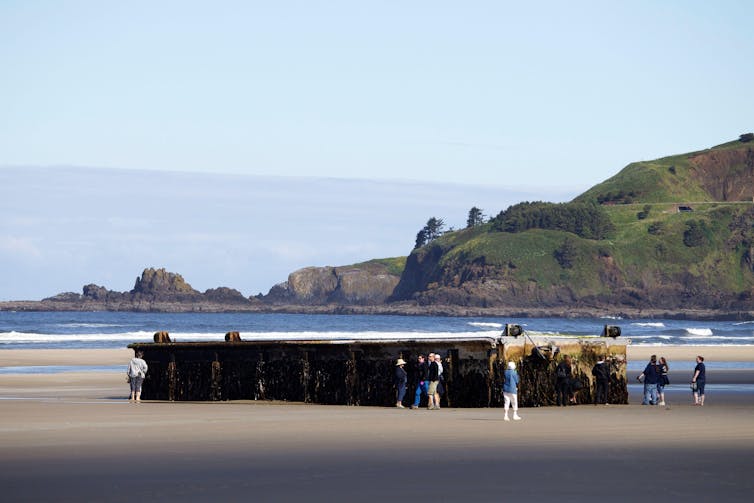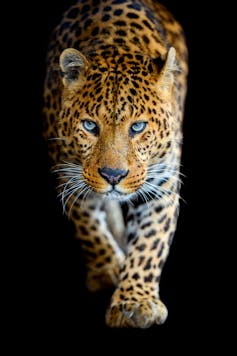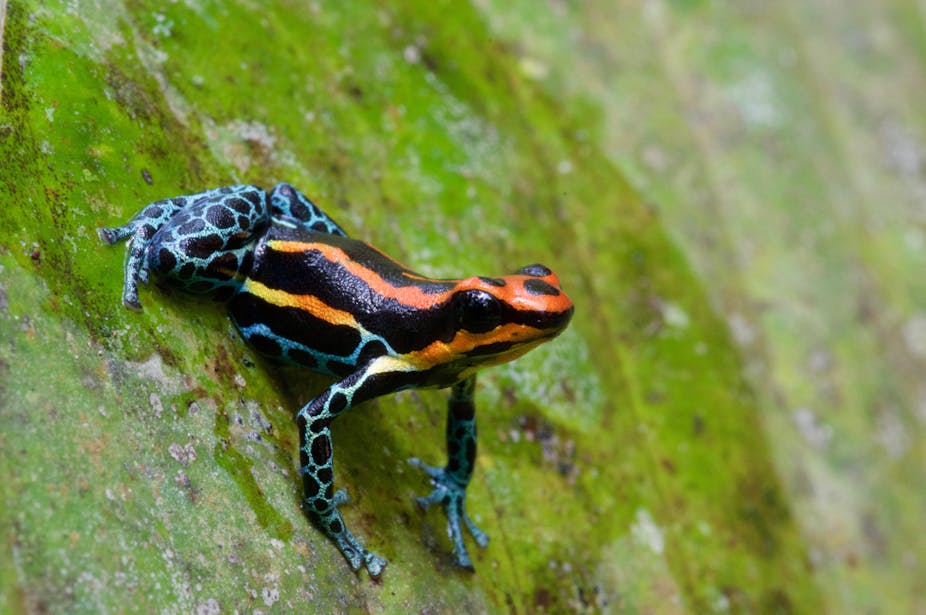The devastating tsunami that hit Japan in March 2011 set off a series of events which have long fascinated scientists like me. It was so powerful that it caused 5 million tonnes of debris to wash into the Pacific – 1.5 million tonnes remained afloat and started drifting with the currents.
One year later, and half a world away, debris began washing ashore on the west coast of North America. More than 280 Japanese coastal species such as mussels, barnacles and even some species of fish, had hitched a ride on the debris and made an incredible journey across the ocean. These species were still alive and had the potential to establish new populations.
How animals cross major barriers, such as oceans and mountain ranges, to shape Earth’s biodiversity is an intriguing topic. And a new study by my collaborators and I has shed light on this process, revealing how animal characteristics such as body size and life history can influence their spread across the globe.
We know that such dispersal events occur in terrestrial species as well. For instance, at least 15 green iguanas journeyed more than 200km (124 miles) from Guadeloupe to Anguilla in the Caribbean in 1995. They arrived on a mat of logs and trees (likely uprooted through a hurricane), some of which were more than 9 metres (20 feet) long.

The role of animal characteristics in dispersal
When animals move across major barriers it can have a big impact on both the new and old locations. For example, an invasive species can arrive in a new area and compete with native species for resources. However, those consequences can be even greater over longer periods of time.
The movement of monkeys from Africa to South America around 35 million years ago led to the evolution of more than 90 species of New World monkeys, including tamarins, capuchins and spider monkeys. And a few chameleons rafting on vegetation from Africa to Madagascar is why we find half of all living chameleon species there today.
These events were long thought to be determined by chance – the coincidence of some chameleons sitting on the right tree at the right time. However, some scientists have suggested there might be more to it. They hypothesised there could be more general patterns in the animals that reach their destination successfully, related to certain characteristics.
Could body size affect how far a species can travel? Animals with more fat reserves may be able to travel longer distances. Or could it be how a species reproduces and survives? For example, animals that lay many eggs or mature early may be more likely to establish a new population in a new place.
But despite a vigorous theoretical debate, the options to test these hypotheses were limited because such dispersal events are rare. Also, the right statistical tools were not available until recently.
Thanks to the recent development of new biogeographical models and the great availability of data, we can now try to answer questions about how tetrapod species (amphibians, reptiles, birds and mammals) have moved around the globe over the past 300 million years and whether successful species share any common characteristics.
These models allow us to estimate the movements of species’ ancestors while also considering their characteristics. We used these models to study 7,009 species belonging to 56 groups of tetrapods.
What we found
For 91% of the animal groups we studied, models that included species characteristics were better supported than models that didn’t. This means that body size and life history are closely linked to how successful a species is at moving to and establishing itself in a new location.
Animals with large bodies and fast life histories (breeding early and often, like water voles) generally dispersed more successfully, as expected. However, there were some exceptions to this rule. In some groups, smaller animals or animals with average traits had higher dispersal rates.
For example, small hummingbirds dispersed better than larger ones, and poison dart frogs with intermediate life histories dispersed better than those with very fast or very slow life histories.

We investigated this variation further and found that the relationship between body size and movement depended on the average size and life history of the group. Our results show that the links between characteristics and dispersal success depend on both body size and life history, and that these cannot be considered separately.
Groups in which small size was an advantage were often already made up of small species (making the dispersal-prone species even smaller), and these species also had fast life histories. We found this to be true for the rodent families Muridae and Cricetidae.
But groups in which dispersers had intermediate body sizes generally had slow life histories (meaning they had low reproductive output but long lifespans). This means the combination of small body size and slow life history is very unlikely to be an advantage for dispersal across major barriers such as oceans.
It’s not just chance
It is amazing to think that rare dispersal events, which can lead to the rise of many new species, are not completely random. Instead, the intrinsic characteristics of species can shape the histories of entire groups of animals, even though chance still may play an important role.
At the same time, two of the most important environmental challenges of our time are related to movement across major barriers: biological invasions and species’ responses to climate change. On a planet facing rapid changes, understanding how animals move across barriers is therefore crucial.

